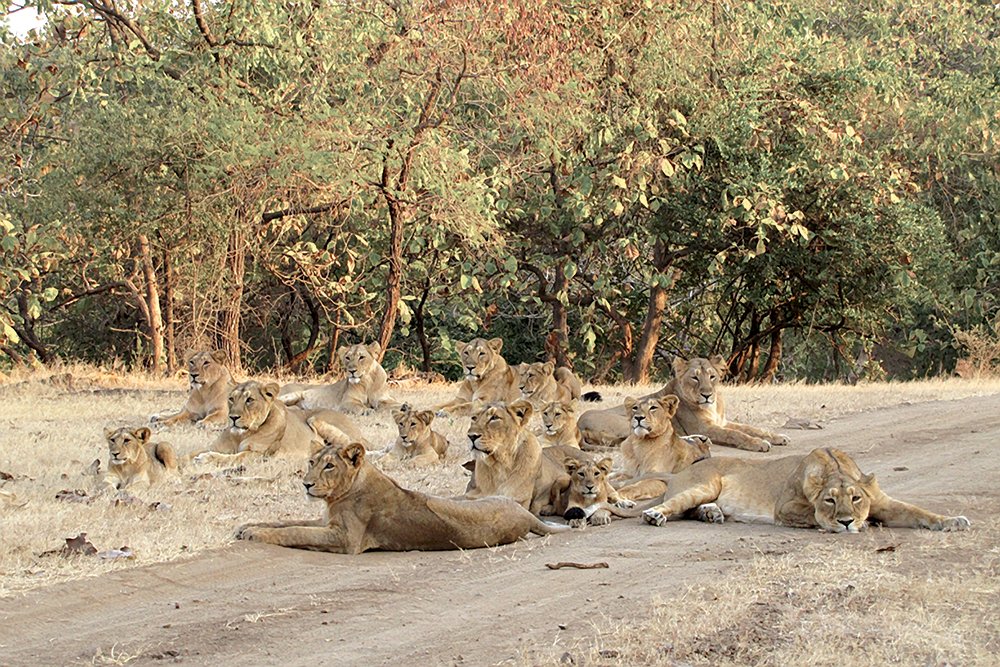
A group of 14 Asiatic lions in the Gir forest, Gujarat India
This picture taken in the last stronghold for lions in India, the Gir Forest, depicts approximately 3% of the wild population of Asiatic (Indian) lions and about 0.5 % of all lions from the IUCN soon to be designated northern lion subspecies Panthera leo leo.
Or putting it another way, nearly 0.1% of global population of lions (now suggested by some to be as low as 20,000) which has seen significant decline even in the past decade.
There are about 400-500 lions in India, slowly populating spaces outside the Gir (which is a problem) and potentially some are due to be translocated in small numbers to a new location in Kuno Wildlife Reserve in Madhya Pradesh.
As for the 20,000 global lion population count, well a further sobering sense of reality is needed:
In 2015 the IUCN stated last year that “The Lion population is inferred to have undergone a reduction of approximately 42% over the past 21 years (approximately three Lion generations, 1993-2014)” and estimated that fewer than 20,000 lions remain.
Reading:
Bauer, H., Packer, C., Funston, P.F., Henschel, P. & Nowell, K. 2016. Panthera leo. The IUCN Red List of Threatened Species 2016: e.T15951A97162455.http://dx.doi.org/10.2305/IUCN.UK.2016-1.RLTS.T15951A97162455.en.
Black S.A. (2016) The Challenges of Exploring the Genetic Distinctiveness of the Barbary Lion and the Identification of Putative Descendants in Captivity, International Journal of Evolutionary Biology. vol. 2016, Article ID 6901892, 9 pages, 2016. doi:10.1155/2016/6901892
